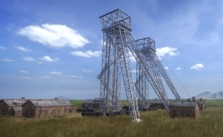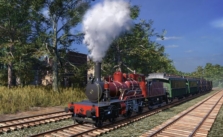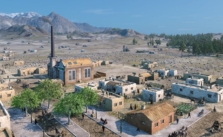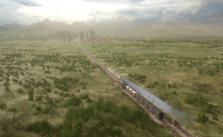Railway Empire 2: Warehouses

In Railway Empire 2, warehouses are indispensable tools to streamline your logistics. They act as a temporary pit-stop for goods destined for specific cities. These hub points facilitate a smoother flow of goods, ultimately contributing to a more effective rail network. What’s more, warehouses can be added to any station—be it a bustling city station, quiet country one, or those set up in remote corners.
Laying the Foundations: Setting Up Your Warehouse
First, select a station and set up a warehouse. An important point to note is that warehouses are versatile—they can be established at any type of station, regardless of its location. Once you’ve selected a location, it’s time to decide what goods your warehouse will hold. You can choose up to six different goods types, and there’s no cap on the quantity of these goods that the warehouse can store. This means your operations can be as large or as small as you need them to be.
Making Connections: Linking Warehouses with Train Lines
This is where strategic placement of warehouses comes into play. Without a warehouse, goods will have to travel from their production sites straight to their destination cities via specific train routes. However, incorporating a warehouse allows goods to be transported from the producer to the warehouse for temporary storage. After storage, these goods can be distributed to various target cities via different train routes. This adds an extra layer of flexibility and efficiency to your rail network.
The Sharing Game: Warehouse Exchanges Between Cities
A neat feature of warehouses in Railway Empire 2 is their ability to swap goods with other warehouses in city stations. If you’ve got multiple city stations with warehouses storing the same type of goods, these warehouses can share their goods. This opens up a whole new avenue of efficient goods distribution, especially if your rail network links cities well. However, remember that this coordination among warehouses doesn’t extend to stations located outside cities.
Limitations of Warehouses
What You Need to Know Despite their flexibility, warehouses have certain limitations. For example, if a city and a producer are close enough that the aerial distance between them is less than half the rail distance, the goods won’t be transported by rail—regardless of whether a warehouse lies on the route or not. This knowledge is crucial when you’re planning your rail routes and trying to maximize efficiency.
Strategic Warehouse Planning
When used thoughtfully, warehouses can significantly boost your game strategy. Imagine you’re moving a variety of goods—say logs, grain, and sugar—from different farms to multiple cities. Having a central warehouse to hold these commodities can make your logistics operation smoother. Trains can load up these goods at the warehouse before dispersing them to their respective destination cities. This approach streamlines the transportation process by eliminating the need for multiple direct lines from each farm to each city.
After you’ve got a hang of the basics, you might want to delve into some advanced strategies to make the most of your warehouses. For example, you could set up a warehouse at a rural station and assign it to accept specific goods like corn and sugar. Trains can then move these goods from this rural warehouse to city warehouses, which can further distribute them to various city destinations. Another strategy could be to place a warehouse in a remote location that acts as a major consolidation and distribution point. It’s all about mixing and matching strategies to see what works best for your empire!









